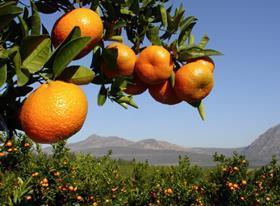
The new South African citrus season in the US has offered some relief for the country's growers, who found the US entry requirements applied during the last few seasons rather harsh.
A pilot programme reducing the cold sterilisation period from 24 to 22 days has been introduced for the 2014 season. This follows an agreement earlier this year between the USDA’s Animal & Plant Health Inspection Service (APHIS) and South Africa’s Department of Agriculture, Forestry & Fisheries (DAFF).
The South Africans have consistently lobbied for a reduction in the cold sterilisation transit time, ever since the US authorities introduced the stricter measures some years ago because of a false codling moth (FCM) scare involving South African fruit in the US. The scare proved to be no more than a storm in a tea cup, but since then the 24-day sterri period has been maintained.
South African citrus sources say aggressive and consistent efforts by citrus growers have reduced the incidences of false codling moth in fruit to less than 0.05 per tree in 2014, compared with 0.19 in 2013 and 0.48 in 2012. This has proved to be decisive in the South African argument for a return to the previous regime.
Meanwhile, the first clementines of the season have arrived in the US on the container vessel MSC Valvik. The first 90 tonnes will open the South African season, which will only really gather steam once the first specialised reefer vessel arrives on 20 June, some two weeks earlier the first reefer arrivals last year.
This will be crucial as the South Africans will be able to take full advantage of the 4 July holiday period. This vessel will bring some 1,300 pallets of clementines and 2,100 pallets of the first Navel Oranges of the season to the US market.
Suhanra Conradie, CEO of the Western Cape Citrus Producers Forum, says the South African season starts with lower levels of US domestic citrus being available compared with last year.
Citrus sources say the lower supply levels couples with earlier reefer arrivals point to a solid start to the season. However, the second reefer vessel is almost certain to leave later than scheduled due to inclement weather off the South African coast as traditional winter storms strike the Cape.
“Easy Peelers, better known in the market as clementines, are in high demand in the US and this initial shipment brings more of those than Navels,” says Conradie. “That will change later in the season when the volume of Navels increases. Star Ruby grapefruit and Cara Cara oranges begin arriving in late June.”
South African citrus exports to the US started in 1999 when the country gained access to the market for the first time. It has since grown to around 40,000 tonnes per season and good growing conditions at the Cape points to this year’s export figure being around the same level.






No comments yet